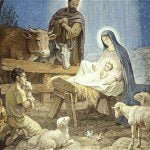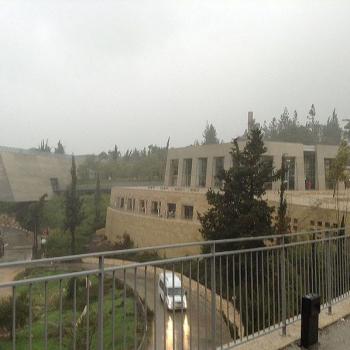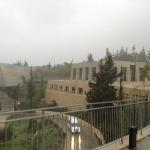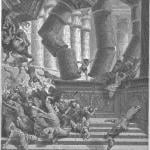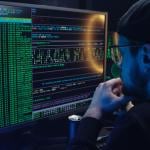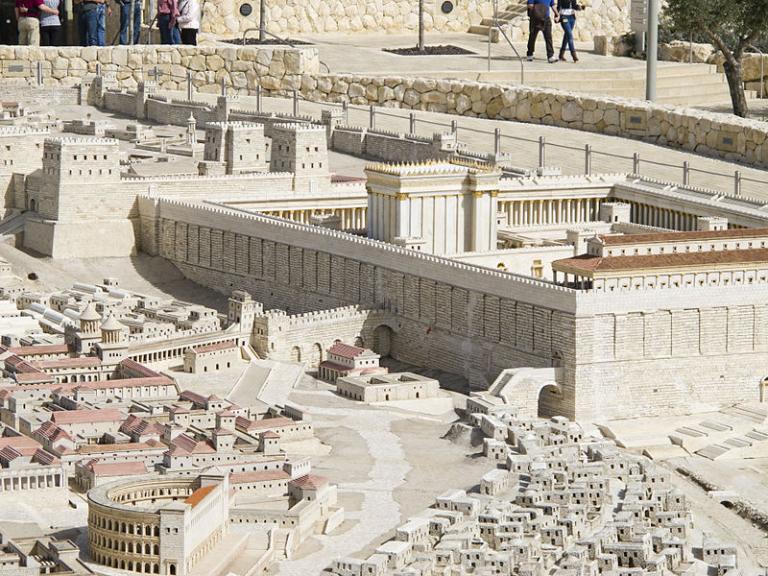
(Wikimedia Commons public domain photograph)
This article has been newly posted on the website of the Interpreter Foundation: The Temple: Past, Present and Future: “The Messianic Sacred, Not Secret: The Son as a Hidden Name in the Gospel of Mark,” written by Jasmin Gimenez Rappleye
Part of our book chapter reprint series, this article originally appeared in The Temple: Past, Present and Future, edited by Stephen D. Ricks and Jeffrey M. Bradshaw. For more information, go to https://interpreterfoundation.org/books/the-temple-past-present-and-future/. For video and audio recording of this conference talk, go to https://interpreterfoundation.org/conferences/2020-temple-on-mount-zion-conference/videos/rappleye/.
“The “Messianic Secret” theory proposes that Jesus Christ forbids demons and followers from revealing who he is for an enigmatic reason. While the findings of the original theory have largely been abandoned, the idea of secrecy motifs in Mark has endured. Mark’s use of the “Son” may be an interpretive key for understanding some of Mark’s enigmatic secrecy motifs. The Gospel of Mark casts the “Son” as a sacred and identifying title for Jesus Christ, which he receives at baptism, keeps hidden from the profane, and ultimately reveals at the cross, symbolized by the rending of the temple veil. This name is used as a device to highlight the ironic recognition of demons, the misunderstanding of the disciples, and the ultimate access humanity has to Jesus Christ’s salvific identity.”
Please note that the article was posted on a Thursday, and that it isn’t a journal article. Journal articles appear on Fridays. One of our readers found this very confusing a while back and, as a result of his confusion, embarrassed himself somewhat. It was a bit painful.
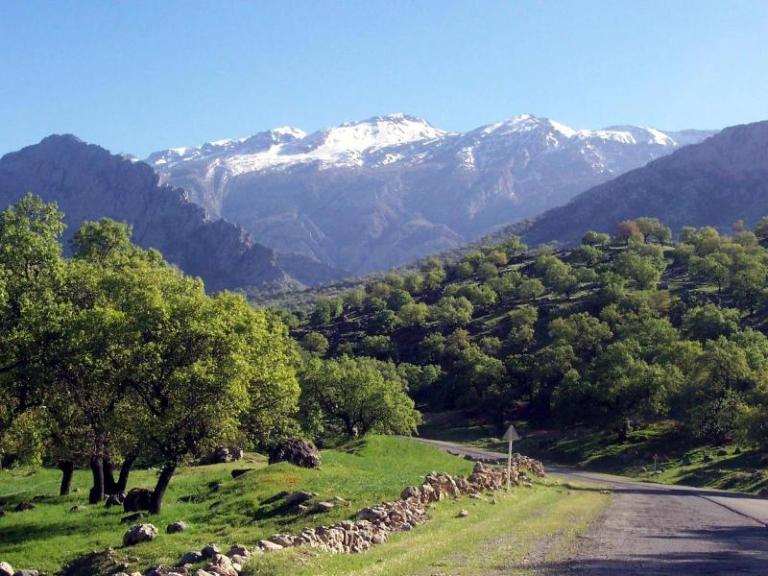
Last night, at the end of Christmas Day, my friend Randy Paul, the founder and president of the Foundation for Religious Diplomacy, with which I myself have been involved since its founding, sent me (and others) the following note:
You are already aware that we have been working for twenty years on building religious diplomacy to compliment other forms of trust-building. One of our foundation’s longest efforts began with my friend, Iranian diplomat Javad Zarif, who is now vice president of Iran.
Today, Christmas Day, he sent this video (see below) to a group of religious diplomats and general citizens as an attempt at trust-building religious diplomacy aimed to help his country’s efforts to stabilize the region more peacefully by changing Iranian internal politics and influencing their external adversaries to change too.
Of course there are multiple motives for all we do, but this is a sincere statement from him and his wife that signals a real breakthrough. In September I met with the President of Iran and several religious diplomat colleagues in NYC to discuss how contention could be ended and honest disagreements faced via ‘heart and mind’ diplomacy. The attached video (download it from the cloud) is one result of that meeting.
Jann and I have been in the Zarifs’ home talking with them at length. We are not naive. We choose to trust these people. Of course, yes, trust and then verify., Both sides have little trust, so first someone needs to extend some trust. Now is the time to try anew.
You can download the Zarifs’ message here. It runs about 4.5 minutes long.
The message becomes overtly political at the end. I rather regret that. And I would want to point out that Iran itself bears, umm, more than a little bit of responsibility for the instability in the Middle East right now. Playing the innocent naïf is hardly convincing. Iran has been supporting Hezbollah in Lebanon and arming the Houthis in Yemen, for example, and has been weaponizing other bad actors in the region for years now.
But I confess to liking Javad Zarif and his wife. One evening, a number of years ago, my wife and I spent several hours with the Zarifs in the dining and living rooms of their apartment in New York City, back when he was the ambassador of the Islamic Republic of Iran to the United Nations. (He later became Iran’s foreign minister.) I, too, am not naïve. But I was deeply impressed with both of them. Our conversation was informal, surprisingly candid, friendly, and sometimes funny. I recall, for example, that he was deeply impressed with then-Mayor Rudy Giuliani’s success in lowering New York City crime rates. (This, of course, was before Mr. Giuliani’s descent into whatever it is that he has now become.) He had, he said, been assigned to the United Nations before, as a junior diplomat, and the area in which he was now living had been very dangerous. Now, though, it was safe and pleasant. Giuliani was being mentioned as a possible presidential candidate at the time, and Ambassador Zarif joked that he had thought about endorsing him. “Somehow, though,” he said, “I don’t think that an endorsement from Iran’s ambassador to the United Nations would help him very much.”
It seems, incidentally, that Randy Paul and I will be traveling to Samarkand, in Uzbekistan, for an inter-religious dialogue at the end of April. Should be interesting.
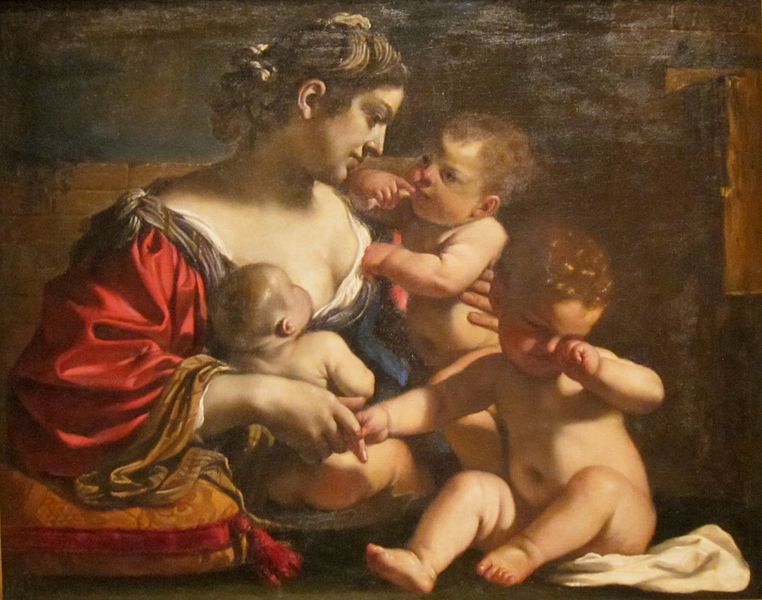
Today, I share a special retrospective item from the Christopher Hitchens Memorial “How Religion Poisons Everything” File™:
“In pictures: Remembering the deadliest tsunami in history”
Twenty years ago, on 26 December 2004, a 9.1-magnitude earthquake triggered massive tsunamis across the Indian Ocean, creating enormous, devastating waves that smashed against the coasts of fourteen countries in the region.
Altogether, the 2004 Indian Ocean earthquake and tsunami represented one of the deadliest disasters in world history, leaving an estimated 230,000 people dead and grievously impacting millions of others.
The initial earthquake struck off the western coast of the Indonesian island of Sumatra, on the morning of Boxing Day, the day after Christmas. Entire towns and villages were swept away and thousands of miles of coastline were destroyed in Indonesia, India, Thailand, Sri Lanka, the Maldives, Malaysia, Myanmar, the Seychelles, and Somalia.
When that 2004 tsunami devastated Indonesia’s deeply Muslim Banda Aceh region, the Church of Jesus Christ of Latter-day Saints sent large quantities of material aid, sadly including the body bags requested by the Indonesian government, but also food, bedding, and cooking pots. Church assistance helped to restore the livelihoods of tsunami survivors, particularly farmers and fishermen, and to build community centers, schools, medical centers, and hundreds of houses. (One of the community centers was designed to double as a mosque.) Once physical recovery was underway, though, Church humanitarian aid personnel asked local officials how the Church could help even more. Those officials responded that their people were spiritually bereft, demoralized. For example, almost all copies of the Qur’an in the area had been lost, swept out to sea, or destroyed. So the Church shipped not only prayer rugs and head scarves to them but hundreds of Indonesian-language copies of the Qur’an.
Writing that last sentence made me especially proud of my church and my people.


